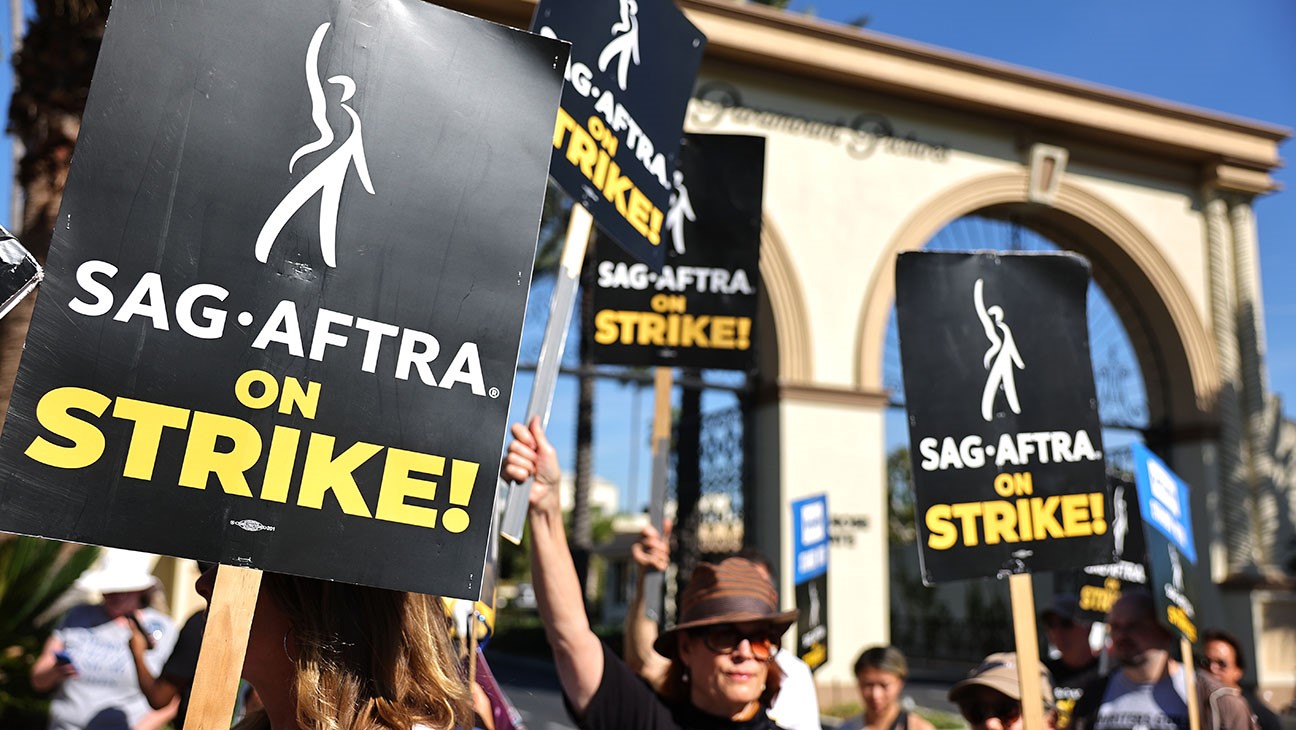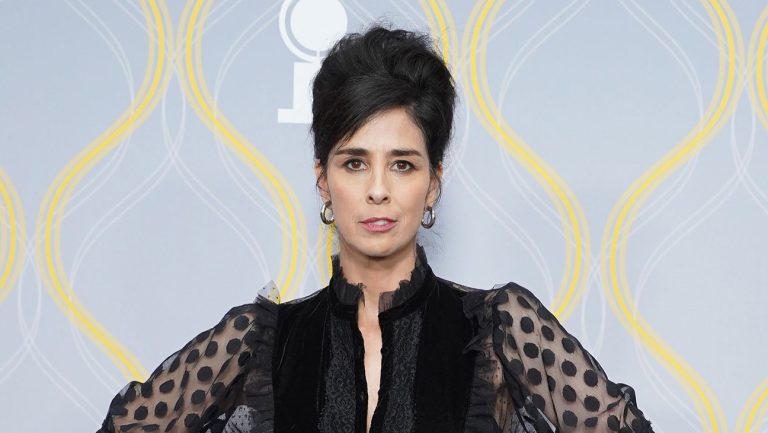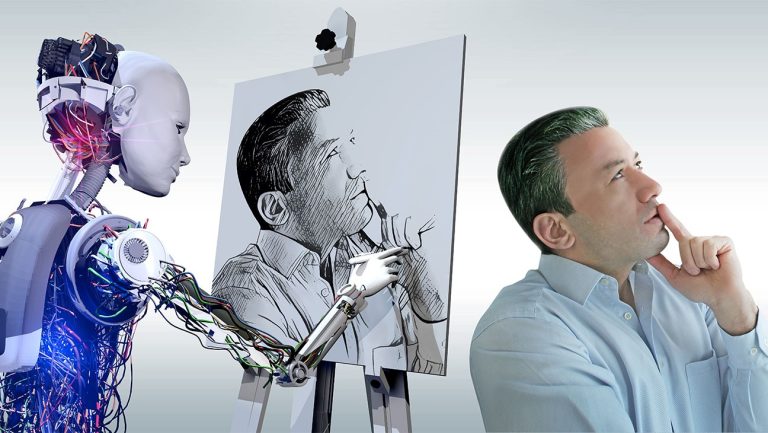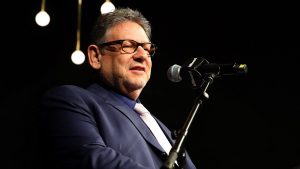SAG-AFTRA initially looked to give itself a veto on certain uses of artificial intelligence. Instead, it got notice and consent requirements.
Of the 16-page summary detailing the tentative deal between SAG-AFTRA and the studios, more than five are spent on provisions over artificial intelligence. It’s the product of months of hard-nosed bargaining by the union on an issue that the studios seemingly didn’t think would emerge as a sticking point walking into negotiations.
The document cites the establishment of a “broad, protective” definition of generative artificial intelligence, along with requirements surrounding notice, consent and compensation around digital replicas of actors and “synthetic performers” created by AI tools. It’s flanked by a first-of-its-kind acknowledgment of “the importance of human performance in motion pictures and the potential impact on employment.”
But SAG-AFTRA members may still have plenty to worry about on AI restrictions — especially on the issue of the creation and deployment of digital replicas in performances that could allow studios to circumvent what were intended to be enhanced protections for actors. Though the deal requires advance notice and a specific description for the intended use, it allows members of the Alliance of Motion Pictures and Television Producers (the studios) to negotiate directly with performers for approval instead of requiring them to go through the union, which sought a veto on certain uses of AI. In practice, this could result in studios strongarming actors into accepting terms that enable them to utilize digital doubles as a condition of employment, according to agents and lawyers consulted by The Hollywood Reporter.
The summary of the tentative agreement splits a digital replica into two types: employment-based, which is created with the performer’s physical participation in connection with employment in a project, and independently-created, which is essentially licensed to a production using an actor’s voice and likeness. The deal grants notable restrictions on consent and compensation for both groups, including a provision that actors be paid at their rates for the number of days they would’ve worked if not for the utilization of their employment-based digital replica (EBDR). For example, if an actor only worked three days instead of five because of their EBDR, they’d get paid for five days. This eliminates a motive to pursue cost-savings through AI tools, though there’s a carveout to payment rules for Schedule F performers, who make over $80,000 for a film. For those actors, the idea is that they have the leverage to negotiate their own terms. It tracks with SAG-AFTRA president Fran Drescher’s focus in negotiations on “journeymen” actors, who make up the bulk of the union’s membership.
But consider Schedule F performers who fall short of making the A-list and are presented with offers that are tied with blanket licenses to use digital clones over the duration of a franchise. Over time, if enough studios arrange deals in this manner, the term will become normalized in contravention of the tentative deal’s aim to empower performers with the ability to control future uses of their AI doubles.
Writers suffered the same degrading of protections laid out in a collective bargaining agreement as it relates to their separated rights. In a prior contract cycle, the Writers Guild of America negotiated in its deal with the AMPTP a unique line item that allows members to retain certain rights on projects, like for theater or spinoffs, regardless of whether the original material is a work-made-for-hire, with ownership of the copyright belonging to the employer. Under the agreement, if the studios wanted to buy those rights back, they have to do so in a separate deal. It was hailed at the time as a groundbreaking achievement that would expand writers’ ability to exploit content in new media. Fast forward 16 years and contracts now typically tie employment for most writers to the sale of separated rights back to studios at the upset price — the lowest, legally enforceable bid in a transaction — of typically $1, say multiple agents who were consulted for this story.
While studios are obligated to obtain consent per the deal, they were always required to do so even if the requirement wasn’t explicitly stated in the previous collective bargaining agreement. Notably, consent for future productions can be obtained at initial employment as long as a reasonably specific description of the intended use is provided ahead of time, undercutting a provision that consent must be obtained at the time of use in a production.
Once traditionally in the realm of CGI, the biggest leaps in the realistic creation of digital replicas are being made in artificial intelligence. Artists and authors are suing OpenAI and Meta, accusing them of using copyrighted material to train their AI systems. SAG-AFTRA is similarly concerned about studios utilizing actors’ actions, movements and facial expressions, among other things, as training data for “synthetic performers,” with the ultimate goal of displacing human labor. Intellectual property laws likely don’t account for this unless an actor’s facial features or identity is incorporated in the output. The tentative deal allows the use of actors’ performances as training data, though the two sides will meet regularly to discuss remuneration, if any.
Some “naysayers,” as Drescher called them in a Monday meeting with members discussing the agreement, have been quick to condemn the AI portion of the deal. In response, union chief negotiator Duncan Crabtree-Ireland explained that studios were never going to relent on allowing AI in some capacity. With concessions on this part, SAG-AFTRA could’ve made gains on other negotiating points, like residuals. The specific language in the Memorandum of Agreement also remains to be seen.
“There are some aspects of this agreement that aren’t perfect,” Crabtree-Ireland said. “This negotiating team fought so hard to get the best possible protections in artificial intelligence. We all play our hand. This hand that we have played from our perspective achieves what we set out.”
BY WINSTON CHO







